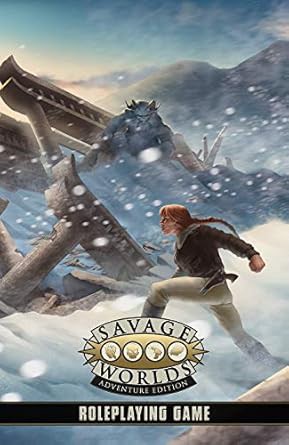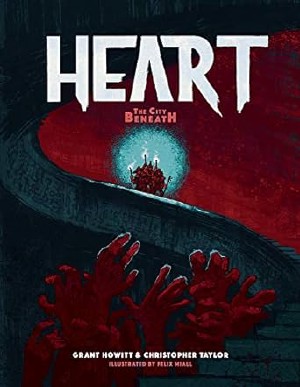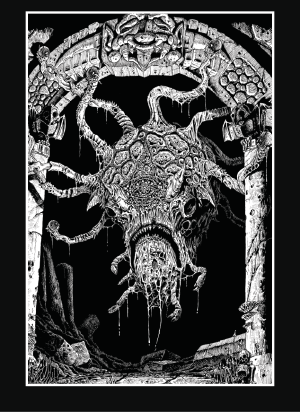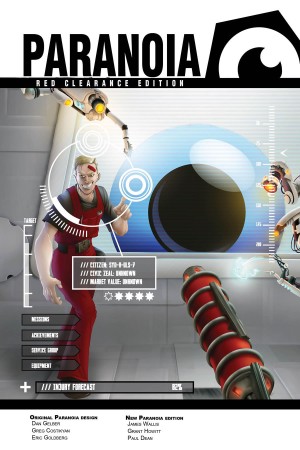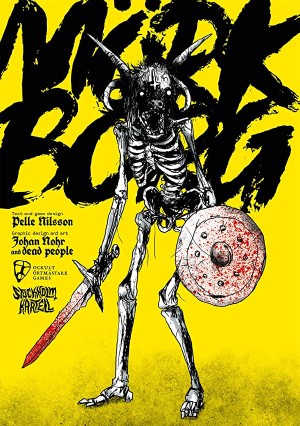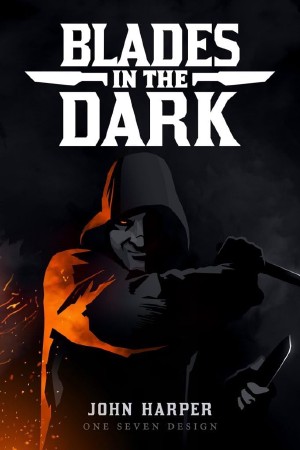Most of the tabletop RPG systems that I’m familiar with are gathering together today to party like it’s 2025 and they’ve all brought something to the table (my brain).
In no particular order, here’s a show and tell of the most interesting mechanics from TTRPG systems that I’ve played and/or ran in the past few years.
Spark Tables ¶
In Maze Rats, after a long rest, PCs with one or more spell slots roll on a series of three different tables to generate each spell’s name, with the mechanics of the spell being determined by the GM based on the name.
For example, rolling on the first table might produce an Ethereal Effect and Physical Element spell, two subsequent rolls on the relevant tables might result in a spell named “Bewildering Insect”.
Then, the GM can make a ruling about what the spell will do when cast so that the player knows how it might be used (“Bewildering Insect will materialize an insect of your choice out of the air, the sight of which will temporarily confuse anyone who sees it.”).
When the PC casts the spell, the GM can nail down the specifics based on context and the player’s ingenuity (“Arggg the Bridge Troll-in-Training sees the 3 foot tall cockroach you created and is stunned for one round, confused about who he should stop from crossing his bridge, the roach or the party.”).
This a great tool for easily generating specific things (in this case, spells) that players can latch onto and have fun with, without being burdened by the cost of specifying everything in detail and, in doing so, limit the potential of said generated thing.
Using words, latent with meaning, as the fulcrum for leveraging more specific randomness into your play while retaining the flexibility of words is a genius design choice. I can see myself using spark tables like this for other GMing purposes like generating NPCs, Factions, etc.
NB: This system is greatly expanded in Knave 2e (Ben Milton). To such an extent, that I was compelled by this dragon’s hoard of tables to automate the process of rolling on them here.
Exploding Dice, the Wild Die and Raises ¶
In Savage Worlds, skill checks involve rolling two dice, your skill die which can be anything from a d4 to a d12 and a Wild die which is always a d6.
Both of these dice are rolled separately and they can both “explode” (if you roll the highest number on a die, then you roll the die again, adding both results to the total, repeating this process until the die doesn’t explode).
The highest total between both of these rolls is the result of the skill check. If it’s higher than the DC of the skill check you succeed, otherwise you fail.
Simple enough, right? But, each increment of four that the result is higher than the DC of the check produces a “raise”. Depending on the pulpy-ness of the setting, the GM can then decide how the skill check resolves in the PC’s favor, going above and beyond simply succeeding based on the number of raises.
Rolling big numbers is fun, having no upper limit to how big these numbers can get is really fun, having these gigantic numbers directly contribute to unforgettable roleplaying moments is something you can only get with a system like Savage Worlds.
It would be hard to bring all these different mechanics to a non-Savage Worlds table but there’s an easy solution for that, play Savage Worlds.
Otherwise, most TTRPGs can be massaged to allow for players succeeding at what they’re trying to do and getting way more than what they expected to get when the dice fall in their favor. Your players will not complain about this.
Beats ¶
In Heart, Beats are “story beats” that players want their PCs to participate in during play. Once the beat is achieved through play, they get a level up.
Beats help guide the GM towards prepping for outcomes that the players want for their PCs. Usually, this is something everyone wants for every roleplaying game they play but Beats systematize this desire and provide a process for easily achieving it at the table.
As each Beat is completed, their sequence naturally forms a storyline and arc for the characters as they descend deeper into the Heart.
Although Beats aren’t as easy to homebrew into any system you might be playing with, I’ve found that by using the Stars and Wishes tool I can achieve a similar effect in my non-Heart games.
Ending each session with Stars and Wishes, gives players the opportunity to tell me, the GM, what they liked about a session and what they would like to see in subsequent ones, helping me prep and thus achieving a similar effect to Beats.
The Death Timer ¶
In Shadowdark, whenever a PC falls to zero HP or below, the rules dictate that you roll a d4 plus the PC’s constitution score. The result is the number of rounds that the PC has before they are fully dead.
Inspired by the Death Save rule in Mothership, my simple twist on Shadowdark’s Death Timer rule (which I used over and over again in my Shadowdark RPG Maze of the Blue Medusa campaign) is that the result of the Death Timer roll should only be seen by the GM.
Turning every potential PC death into a recurring high intensity risk vs. reward combat situation that everyone at the table is really invested in is a master class in design especially when combined with high stakes OSR style gameplay.
I will never run an OSR game without at least considering bringing some version of this rule to the table because of how effective it is in raising the stakes over and over again.
One caveat to this is that this rule might make a game less lethal by reducing the likelihood of death. This would be the case for a system like Maze Rats (Ben Milton) where a PC falling to zero HP or below means instant death. If that’s a problem then the GM can ramp up the difficulty accordingly to account for this.
The In-Character Debriefing ¶
Paranoia is a great system, it’s bold, evocative and extremely English. If you forced me to pick the one part of it that I like the most, it would be the debriefing that the PCs have with their supervising officer at the end of each mission.
It’s a great way to end a session on a high note, reminding players of all the choices they made and the hijinks they got themselves into, amplifying the fun of it all.
Explicitly applying this rule broadly into other systems isn’t very easy unless you’re playing something like FIST: Ultra Edition (Claymore) or Savage Worlds: Rifts© - The Tomorrow Legion Players Guide (Pinnacle Entertainment) where the PCs are soldiers sent out on missions. In games like this, it would be expected for PCs to return to base after every mission to debrief with their supervising officer.
If you’re playing a game where this isn’t the case, then I’ve found that pushing myself to have NPCs simply ask the PCs questions about the things they’ve done recently achieves a similar effect. Sometimes this can feel a little unnatural from the GM’s perspective because both the GM and the players know fully well what the PCs just did and the hijinks they got themselves into. If this is the case for you, try to push past it and see if your players enjoy these sorts of in-character debriefings of their play.
I’ve found that giving the players an opportunity to gloat about, commemorate and reflect on their actions in-character often makes for great roleplay and more memorable sessions.
The Calendar of Nechrubel ¶
In Mörk Borg, at dawn, the GM rolls a die, on a one, a catastrophe is unleashed upon the world and after seven of these catastrophes have crippled the world beyond repair, the world ends.
Conceptually this is really cool but mechanically it provides an explicit timer and eventual end to every Mörk Borg campaign.
As you’ve likely experienced yourself, many campaigns peter out. Having an explicit timer provides a sense of urgency and raises the stakes at the table every session and helps to prevent campaigns from fizzling into nothing.
Knowing that the end is nigh, provides players with a lot of interesting roleplaying opportunities. What do the PCs choose to do when they know that the world is going to end in a few days? Answering those kinds of questions at the table can be really fun.
Not every campaign needs to be framed with a world-ending apocalypse though. But, most campaigns could be improved by the GM thinking constantly about the passage of time and how it can impact the game world. For example, what if there’s a big dungeon with a ton of loot and people living in it? How would the PCs react if they knew that the dungeon was going to collapse in 7 days?
I don’t know but I’m sure it would be interesting to find out.
Connections ¶
I’ve already written quite a bit about my obsession with forcing players to come up with connections their PCs have with each other and with NPCs during character creation so I’ll keep this short.
Determining how the PCs know each other and who they know in the world during character creation does wonders for giving the GM something to riff off of and helps build the world before the first session even begins. And, it gives players an initial thrust into thinking about their PCs as something more than just a sheet of stats.
Also, letting players contribute meaningfully to the setting of the game right from the start is great for me because I’m interested in collaborative storytelling and I’ve found that the more opportunities I give players to meaningfully contribute to the story being told at the table, the more they end up enjoying the roleplaying experience.
Conclusion ¶
And now, the potluck is popping off. There were a few TTRPGs that I forgot to send invitations to (cough F.A.T.A.L. cough). That’s because I knew that they wouldn’t have brought anything interesting to the table other than the idea that TTRPGs sometimes have more to say about the people designing them than the world they’re trying to describe and systematize.
Every TTRPG you play presents you with an opportunity to think about what someone else’s conception of what “fun” roleplaying is and compare it with your own.
What TTRPG have you played recently and what would they bring to your potluck?
None of the artwork or writing on this site was created with the use of AI/LLMs.
If you'd like to get in touch with me, check out my about page.
Follow me with your RSS reader to be notified whenever I write something.

